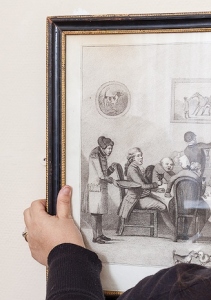Private client insurance brokers
enquiries@castleacreinsurance.comLondon: +44 (0)203 966 3614
UK: +44 1787 211 155
Museum Security
- 4 October 2020
- Comments: 0
- Posted by: Castleacre
Museum Security is at the top of the agenda at the moment but good risk management and tailored insurance can mitigate potential problems.
Hugo Johnsen, Director of Heritage Brokers Castleacre, looks at the Security Problems which Museums Currently Face

There have been a number of high profile museum thefts over the last few years, emerging art markets and record prices, particularly for portable Asian works of art, have undoubtedly led to some ‘thefts to order’. Talking to the museums and insurers that we work with, theft is still relatively rare and recent cases haven’t substantially changed the cost of insurance though most would argue that it has strengthened the argument for pro-active risk management, particularly in relation to current commercial art market values and likely areas of future change. Andrew Davies, a Senior Risk Surveyor with AXA- Art, says ‘Risk management, namely the protection against theft, often directly correlates with value. It is always very important for museums to be aware of an item’s commercial value so that an informed decision can be made as how best to protect from theft. .. What was worth £5,000 ten years ago might be worth £100,000 now.’
Paradoxically the high profile nature of recent thefts and the public reporting has helped museum security in some instances -shared intelligence has improved within the museum community and has been reinforced with dedicated policing and preventative work by organisations like the Art Loss Register. This improvement in communication has had a knock on effect for even the smaller independent museums and galleries who are more aware of current risks, as a result many have improved security. Thankfully the costs of providing wider CCTV camera coverage, better alarm systems and secure displays, have diminished and museums can now pinpoint more vulnerable objects enabling them to be more responsive to threats. On the other hand, though improved technology and communication have enhanced security protection in some areas, this has to be balanced against an economic environment which has forced reductions in front line staff, and many organisations would argue that this is an area of vulnerability. Of course while security is a priority, a museum’s primary function is to improve the experience of visitors by allowing greater access to their collection and this of course can make objects not only more susceptible to theft but also to damage. Probably the biggest change within the museum world from an insurance perspective is the risks associated with increased commercial activity and public access. Many organisations have had to undertake a more commercial approach to survive – this can mean anything from opening a museum shop or restaurant to hosting a whole range of corporate/public events.
As a broker we are now working much more in partnership with museums to help them protect an assortment of risks against improved public access. Commercial policies or blanket local government schemes don’t really help with this approach. James McDowell, an Underwriter with AXA-Art says ‘standard commercial combined policies have their downsides…..they may appear to be less expensive but they are generally not flexible enough to cater for expanding museum exhibition programmes.’
We have found that insurers who offer tailored policies, which take into account not just risks to the collection but storage, listed building status, public liability and commercial activity offer a real advantage with more cost effective and tailored protection. Clare Pardy, Fine Art Underwriting Manager at Ecclesiastical insurance says ‘specialist insurers and brokers are often better able to respond to trends and changes in the art market ….and are able to offer sensible risk management advice and help with finding skilled and knowledgeable valuers’. We often work directly with museum staff and bring in specialist valuers to identify the parts of the collection which should be prioritised for insurance; this might take into account theft risks -like Jade, Rhino horn or external sculpture, or the elements of the collection which provide the greatest draw for visitors. We also consider future areas of risk.
In reality, accidental damage claims from museums seem to be much more common than theft claims with curators looking to recover the cost of repair or restoration. This is reflected in Government Indemnity Scheme figures from the Department of Culture, Media and Sport , a scheme which many museums rely on to help them protect objects of national interest. All claims raised by institutions with the GIS since 2000 have related to repair and not theft. This may in part be due to the fact that objects with a unique status are by their very nature irreplaceable- a conundrum which both museums and insurers face when reviewing security and risk.
